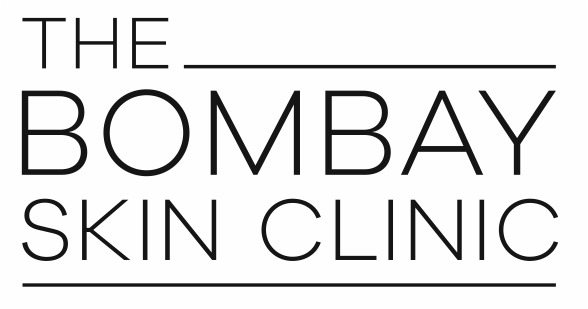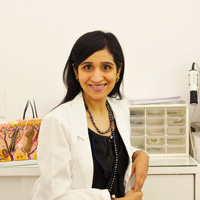Overview | Acne Scar Treatments | Risks and Results | Ideal Candidates | Types of Acne Scars
I understand how frustrating acne breakouts can be. And, when they leave behind scars, it can feel even more disheartening. According to the National Centre for Biotechnology Information, facial scarring affects 75% of acne patients. The good news is that acne scars can be treated effectively through a host of methods.
Once you have gotten rid of active acne, you can proceed with acne scar treatment. Ready to embark on the journey of reclaiming your smooth, flawless skin? Let’s jump right into it.
In this article, I will talk to you about acne scar treatment, the types of acne scars, and skincare for the future.
What are the different types of acne scar removal treatments?
The main types of treatments for acne scars are:
- Chemical peels – These are powerful peels that help to remove the top layer of the skin to help reduce deeper scars. At the Bombay Skin Clinic, I determine the best chemical peel for your skin after a detailed skin and acne scar examination. Our handpicked selection of chemical peels rejuvenate and resurface the skin, improving its texture and smoothness. Chemical peels work only for very superficial acne scars and always work in combination with other treatments like subcision or microneedling.
The most common types of peels you can use include Azelaic acid, Mandelic Acid, Glycolic acid, Salicylic acid, Yellow, and Black peels. I recommend that you consult with an experienced dermatologist before deciding on a peel type; each one has a unique purpose. For example, Glycolic acid is suited to normal to oily skin, while Mandelic acid works best on darker skin tones. Thus, deciding on the right peel is the key to getting optimal results. This decision is best taken by your dermatologist as owing to their experience and study they would be the best to guide you. - Injections – There are some medications, like chemotherapy drugs, interferons, and corticosteroids, which can be injected into raised scars to help soften and flatten them. This line of treatment usually requires a session to be done every few weeks. However, this treatment is hardly ever recommended.
- PRP – Platelet-rich plasma (PRP) uses the patient’s own blood platelets to stimulate new cell growth, collagen production, and new cell production. Since PRP harnesses the beneficial power of the patient’s own platelets, there is no chance of allergy or rejection of treatment. PRP is often performed along with other treatments like laser treatment for acne scars removal and Microneedling RF treatment for the best results.
At The Bombay Skin Clinic, I use the Vampire Acne Scar PRP treatment. Patients have seen results in just one treatment, with smoother, younger, tighter, and brighter skin. The National Centre for Biotechnology Information, too, has conducted research that supports PRP treatments for acne scars. - Dermabrasion – This is one of the most common treatments for facial scars close to the surface, like rolling scars or boxcar scars. In this treatment, the dermatologist “sands” the skin with special equipment. The high-speed instrument has a coarse brush or wheel that removes the outer skin layer to improve irregularities in the surface skin. This treatment makes way for a new layer of skin that replaces the old skin. Initially, the skin will appear to be pink; however, a few weeks later the new skin that appears is far smoother. Healing takes a few days and this can vary between patients.
Do note that with this treatment only very superficial scars can be treated. With the newer laser treatments and microneedling treatments available, dermabrasion has lost its popularity. This is because, sometimes, aggressive dermabrasion can leave the skin damaged and irritated. - Dermapen – The latest in microneedling technology, the Dermapen offers nonsurgical remodeling, reduction, and/or removal of acne scars. At the Bombay Skin Clinic, I use the latest Dermapen 4, a handheld device that helps to create rejuvenating fractional micro-channels in the skin that actively break up scar tissue. This encourages the production and distribution of new collagen that works to build thicker, firmer, and healthy skin in the scarred region. The AOVN technology of the Dermapen 4 automatically calibrates the motor speed, penetration, and pressure on the targeted area with precision. My patients have praised this treatment for giving noticeably smoother skin that looks very even.
- Laser treatment for acne scar – Laser treatments, also known as laser resurfacing, work similarly to dermabrasion and chemical peels. The American Society for Dermatologic Surgery notes how this procedure involves the use of a wand-like laser instrument applied to the skin to remove the top layer and reveal newer, more youthful skin. The different types of lasers used to treat acne scars include fractionated lasers like MnRF, erbium laser, and ablative laser CO2. I advise you to let the dermatologist choose which laser would suit your scars and skin tone the best.
C02 lasers are ideal for getting rid of deep wrinkles, warts, and acne scars, while erbium laser is useful for finer wrinkles and lines. Both lasers remove the outside layers of the skin. While the former pokes microscopic holes into deep layers of the skin to even out pitted acne scars, the latter promotes collagen remodeling. It can take three to 10 days for the redness from the lasers to subside.
At The Bombay Skin Clinic, I use the Secret Micro-Needle Fractional RF system for tightening and rejuvenation with minimal invasion micro-needles to deliver controlled RF energy directly into the depth of the skin. This US Food and Drug Administration-approved treatment heats the tissue and stimulates new collagen production, promotes skin remodeling, and effectively breaks down the scar bands. Patients who have opted for this treatment have seen a marked reduction in acne scars. We also use the Gold Toning laser, which reduces redness and lessens acne marks. US FDA-approved with zero downtime, this unique protocol also eliminates excessive vascular issues. - Dermal fillers – Face filler, or dermal filler, can be used to fill in acne scars and help even out the skin. These are made with collagen, your own fat, or a commercial filler. They are injected in the surface of the skin to help smooth out depressed scars and plump up the skin. At The Bombay Skin Clinic, I use only safe fillers to help solve your acne scar woes. Patients have seen results almost instantly, but it may also take around two weeks for the full effects of the treatment to show.
- Microneedling RF – Microneedling Radiofrequency is a minimally-invasive treatment that utilizes a hand-held, needle-studded device to puncture numbed skin and stimulate collagen production by delivering radiofrequency energy. As per the American Academy of Dermatology, this can help reduce the depth of acne scars within nine months. Harvard Health Publishing notes it as a safe treatment. At The Bombay Skin Clinic, I use the latest in microneedling technology. Patients have reported seeing improved texture and firmer skin with noticeable scar reduction. This is a near–painless treatment with no side effects and no downtime required.
- Subcision – Also known as subcutaneous incisional surgery, subcision is a procedure performed to treat depressed scars using a hypodermic needle to puncture the skin surface. The needle’s sharp edge breaks fibrotic strands that are connecting the underlying tissue to the scar. This treatment, at The Bombay Skin Clinic, is performed in conjunction with any other treatment for acne scars to achieve a more successful outcome. During wound-healing, the new collagen produced improves the appearance of the scar. You may feel some pain or tenderness, but the results are simply excellent.
What are the risks and results to expect after the procedure?
There are minimal risks that generally accompany common acne scar treatments. These can include post-procedure redness, inflammation, skin sensitivity, and minor infections. At the Bombay Skin Clinic, I make every effort to ensure the minimization of potential risks from every procedure for the comfort of the patient.
Most of the treatments mentioned above can substantially reduce the visibility of acne scars or reduce their size, making them barely noticeable. I want to stress that results vary on a case-to-case basis and depend entirely on the skill of the dermatologist treating you.
A very simple way to find out if your scars can get better is to look in the mirror and stretch the skin near the acne scar. If the scar looks better when it is stretched, then getting an acne scar removal treatment will make a lot of difference to the skin. At The Bombay Skin Clinic, we examine the skin thoroughly and explain the outcome to our patients.
I also do insist that patients follow the dermatologist’s advice for after-care for the best results.
How many sessions will be required?
Based on the severity of your case, your dermatologist will recommend the number of sessions required for effective acne scar removal. On average, I personally recommend two to six sessions of acne scar treatment for optimal results. However, this again differs from patient to patient.
Is there any self-care required in the future?
I always recommend some self-care tips for my patients after every procedure. Since the treated skin will be more sensitive than usual, you should:
- Avoid direct sun exposure for a few days
- Avoid touching or rubbing your face unless necessary
- Use a mild, oil-free sunscreen to decrease irritation and keep pores clean
- Bathe with a mild, non-harsh, non-drying soap
- Apply makeup to the treated area only after a week
- Keep hydrated to boost recovery and growth of healthy, new skin
- Avoid strenuous exercise that may cause you to sweat a lot
Additionally, your dermatologist may prescribe creams or certain medicines that need to be used for a few days post-procedure. I urge you to follow your dermatologist’s instructions carefully for the best results.
Now that we have looked at the main acne scar treatments, let me answer some of my patients’ frequently asked questions.
Who is the ideal candidate for acne scar treatments?
The ideal candidate for acne scar treatments is someone who is mentally and physically healthy enough to undergo the procedures. They should also present acne scars that are treatable. The treatments work best if the skin is not excessively oily.
To determine the suitability of a treatment, I take into account all the particulars of a patient’s medical history and current physical condition. The well-being of my patients is of paramount importance.
When should you go in for acne scar treatment?
Generally, I recommend going in for acne scar removal only once your active acne has cleared up. Additionally, if you have widespread and uncontrolled acne scars, then you can consult with an experienced dermatologist, who will be able to best advise you on your case.
What are the different types of acne scars?
To help you identify the type of acne scars you have, I have listed below the three main types:
- Depressed scars – As the name suggests, these scars are situated below the surrounding skin. They are formed when insufficient collagen is produced while a wound is trying to heal. They can range from being U-shaped or V-shaped with rounded or irregular edges and go deep into the skin. There are three types of depressed scars. Firstly, there are rolled scars, which are easy to treat. Secondly, there are box scars, which require more sessions to treat their stubborn walls. Thirdly, there are ice pick scars, which are the most difficult to treat.
- Raised scars – These are commonly found as back and chest acne scars. As per Stanford Healthcare, raised scars are common among Asians. Unlike depressed scars, they are found standing above the surrounding skin’s surface. These scars are caused by an excess of collagen production during the process of healing.
- Dark spots – True to its name, a dark spot may be brown, red, or purple in color. This discoloration technically is not a scar; it is left behind after a zit has cleared up. These tend to fade away over the course of a few months.
Closing thoughts
To sum up, the wide range of acne scar removal treatments at your disposal now make it possible for you to seek the right procedure for your skin type and be on your way to smooth, blemish-free skin. I encourage you to go for a consultation with a certified dermatologist to treat acne scars as early as possible for better results!
References
- American Society for Dermatologic Surgery: https://www.asds.net/skin-experts/skin-treatments/laser-resurfacing/laser-resurfacing-for-acne-scars
- American Academy of Dermatology: https://www.aad.org/public/diseases/acne/derm-treat/scars/treatment
- National Centre for Biotechnology Information: https://www.ncbi.nlm.nih.gov/pubmed/30102625
- Stanford Healthcare: https://stanfordhealthcare.org/medical-conditions/skin-hair-and-nails/acne-scars/types.html
- Harvard Health Publishing: https://www.health.harvard.edu/staying-healthy/needling-your-way-to-healthier-skin

 Dr. Batul Patel is a celebrity dermatologist and the medical director of The Bombay Skin Clinic an award winning clinic located in South Mumbai & Bandra. She is a passionate and dedicated dermatologist with expertise in all fields of dermatology, trichology and aesthetic dermatology. She has been practicing for more than a decade. Her range of expertise include emsculpt NEO, coolsculpting, fillers, acne treatment, lasers, skin rejuvenation, hair loss, hair transplant, PRP & pigmentation treatments.
Dr. Batul Patel is a celebrity dermatologist and the medical director of The Bombay Skin Clinic an award winning clinic located in South Mumbai & Bandra. She is a passionate and dedicated dermatologist with expertise in all fields of dermatology, trichology and aesthetic dermatology. She has been practicing for more than a decade. Her range of expertise include emsculpt NEO, coolsculpting, fillers, acne treatment, lasers, skin rejuvenation, hair loss, hair transplant, PRP & pigmentation treatments.